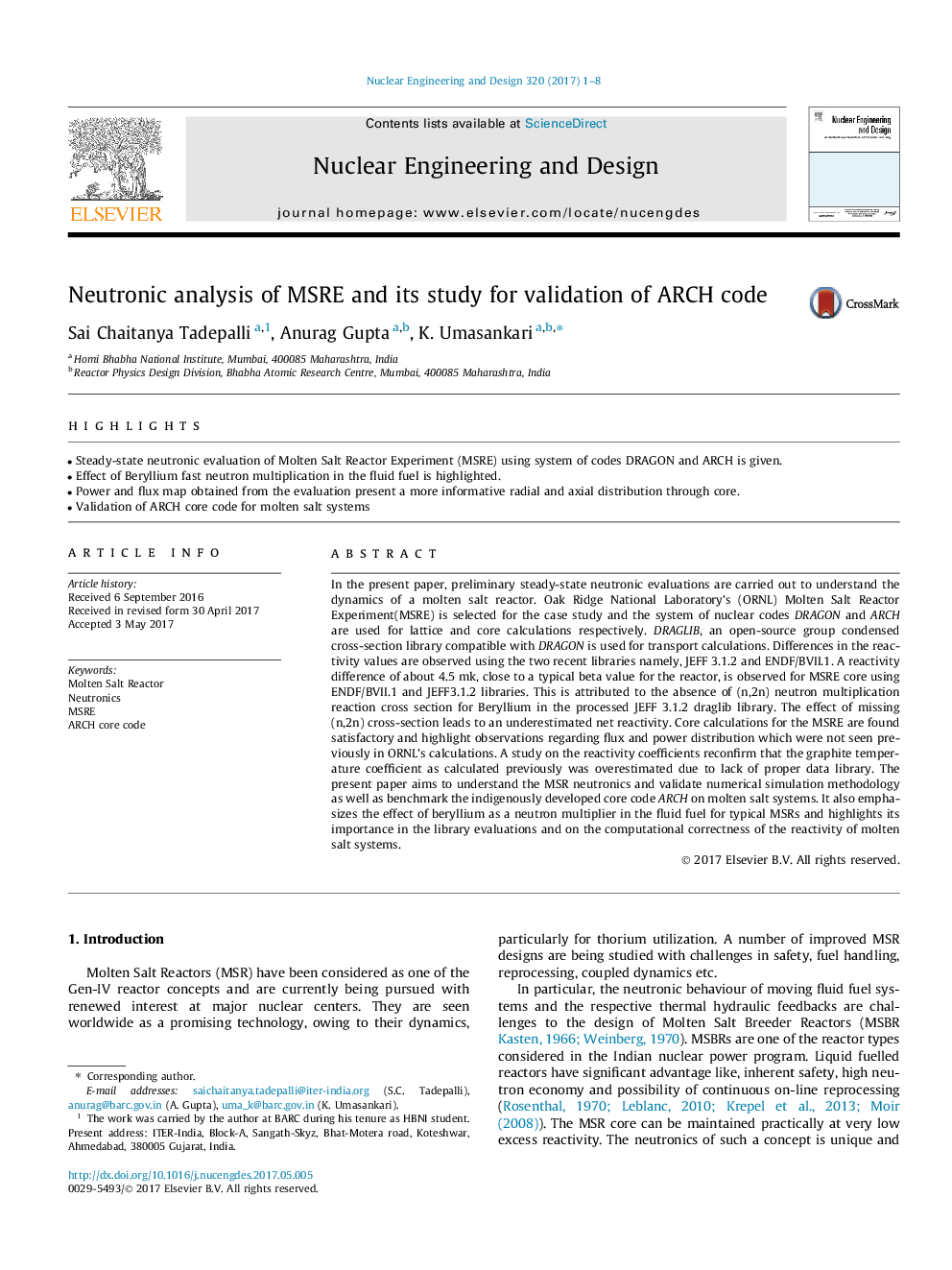| Article ID | Journal | Published Year | Pages | File Type |
|---|---|---|---|---|
| 4925405 | Nuclear Engineering and Design | 2017 | 8 Pages |
Abstract
In the present paper, preliminary steady-state neutronic evaluations are carried out to understand the dynamics of a molten salt reactor. Oak Ridge National Laboratory's (ORNL) Molten Salt Reactor Experiment(MSRE) is selected for the case study and the system of nuclear codes DRAGON and ARCH are used for lattice and core calculations respectively. DRAGLIB, an open-source group condensed cross-section library compatible with DRAGON is used for transport calculations. Differences in the reactivity values are observed using the two recent libraries namely, JEFF 3.1.2 and ENDF/BVII.1. A reactivity difference of about 4.5 mk, close to a typical beta value for the reactor, is observed for MSRE core using ENDF/BVII.1 and JEFF3.1.2 libraries. This is attributed to the absence of (n,2n) neutron multiplication reaction cross section for Beryllium in the processed JEFF 3.1.2 draglib library. The effect of missing (n,2n) cross-section leads to an underestimated net reactivity. Core calculations for the MSRE are found satisfactory and highlight observations regarding flux and power distribution which were not seen previously in ORNL's calculations. A study on the reactivity coefficients reconfirm that the graphite temperature coefficient as calculated previously was overestimated due to lack of proper data library. The present paper aims to understand the MSR neutronics and validate numerical simulation methodology as well as benchmark the indigenously developed core code ARCH on molten salt systems. It also emphasizes the effect of beryllium as a neutron multiplier in the fluid fuel for typical MSRs and highlights its importance in the library evaluations and on the computational correctness of the reactivity of molten salt systems.
Keywords
Related Topics
Physical Sciences and Engineering
Energy
Energy Engineering and Power Technology
Authors
Sai Chaitanya Tadepalli, Anurag Gupta, K. Umasankari,
